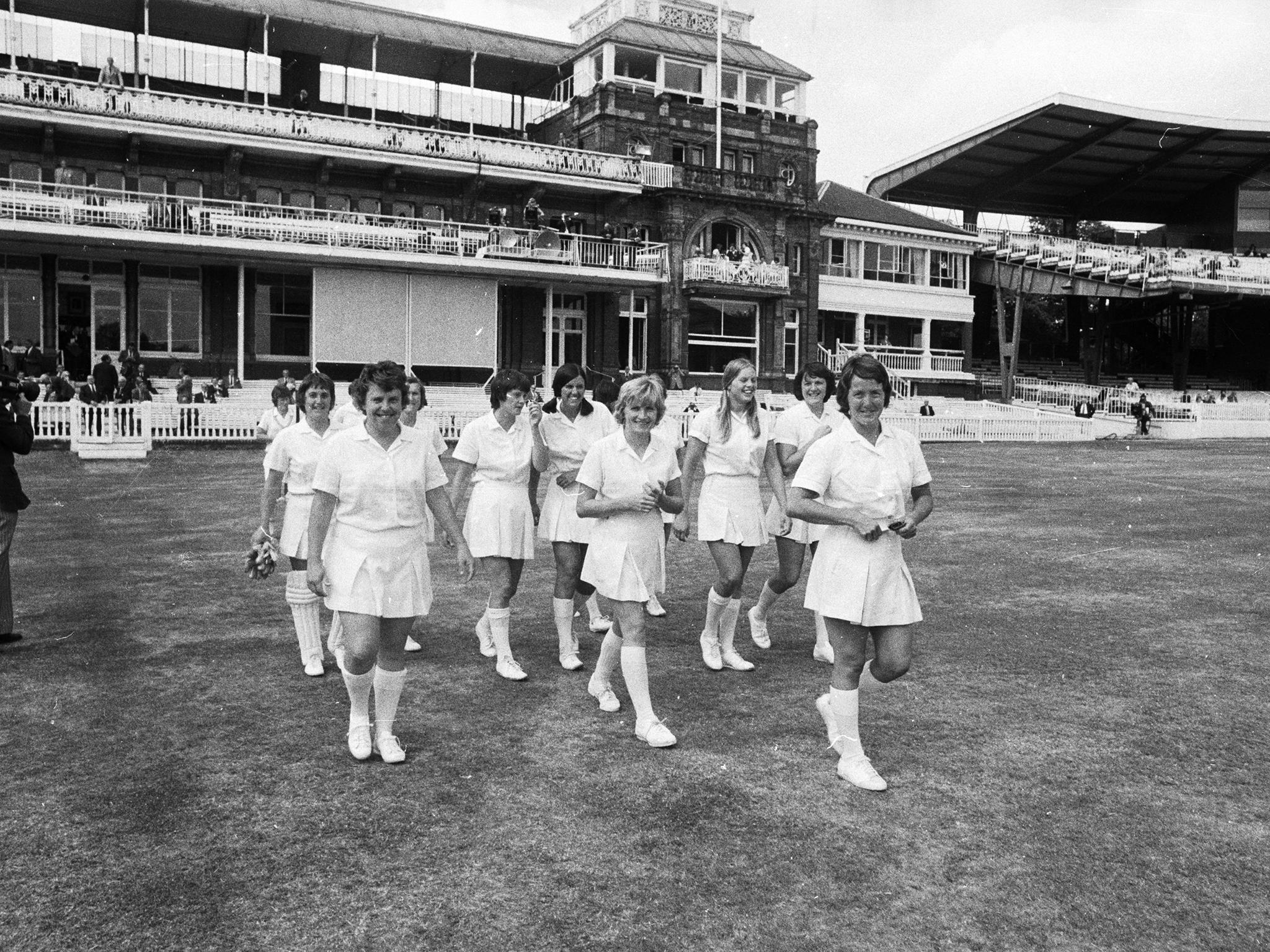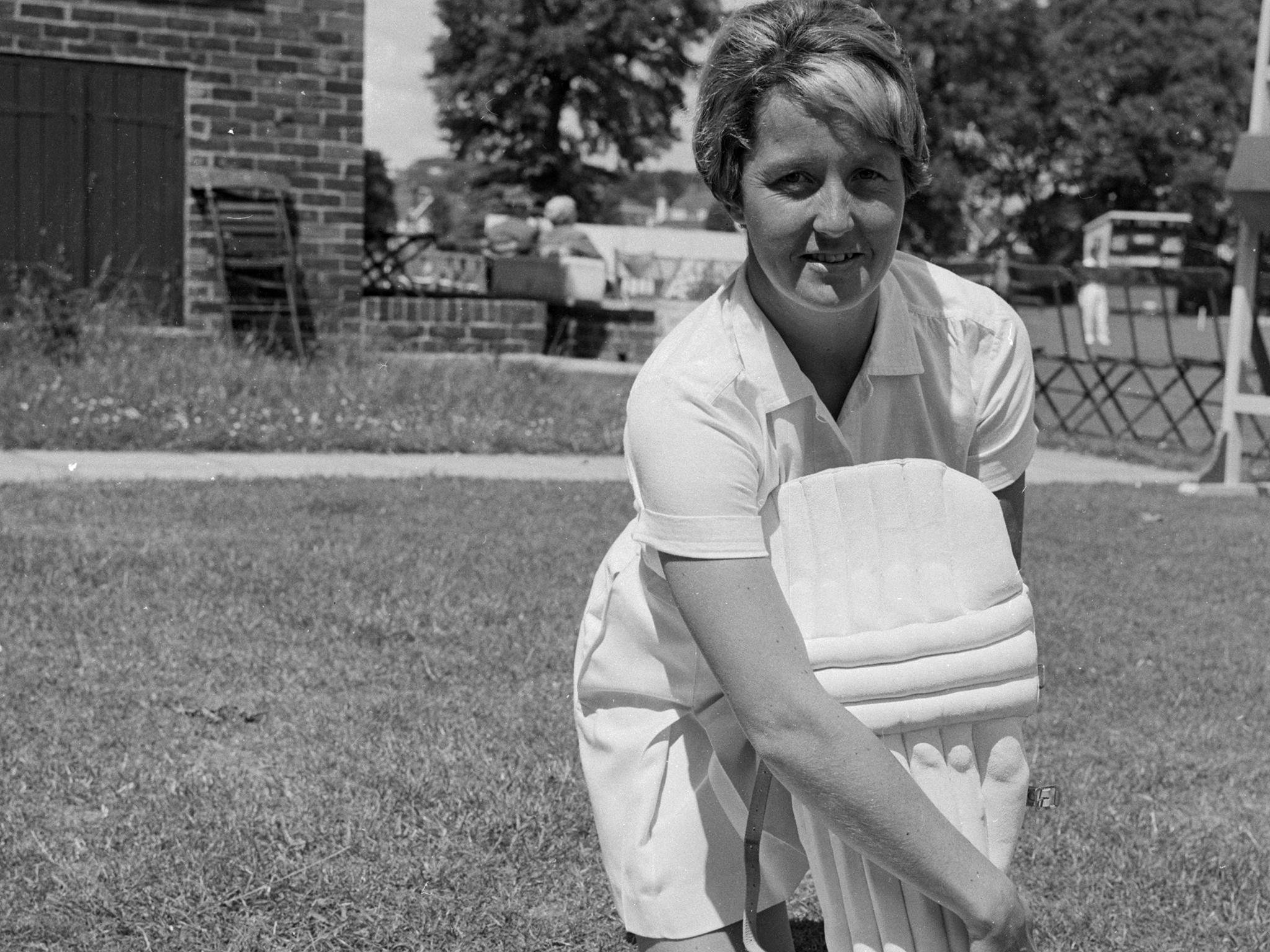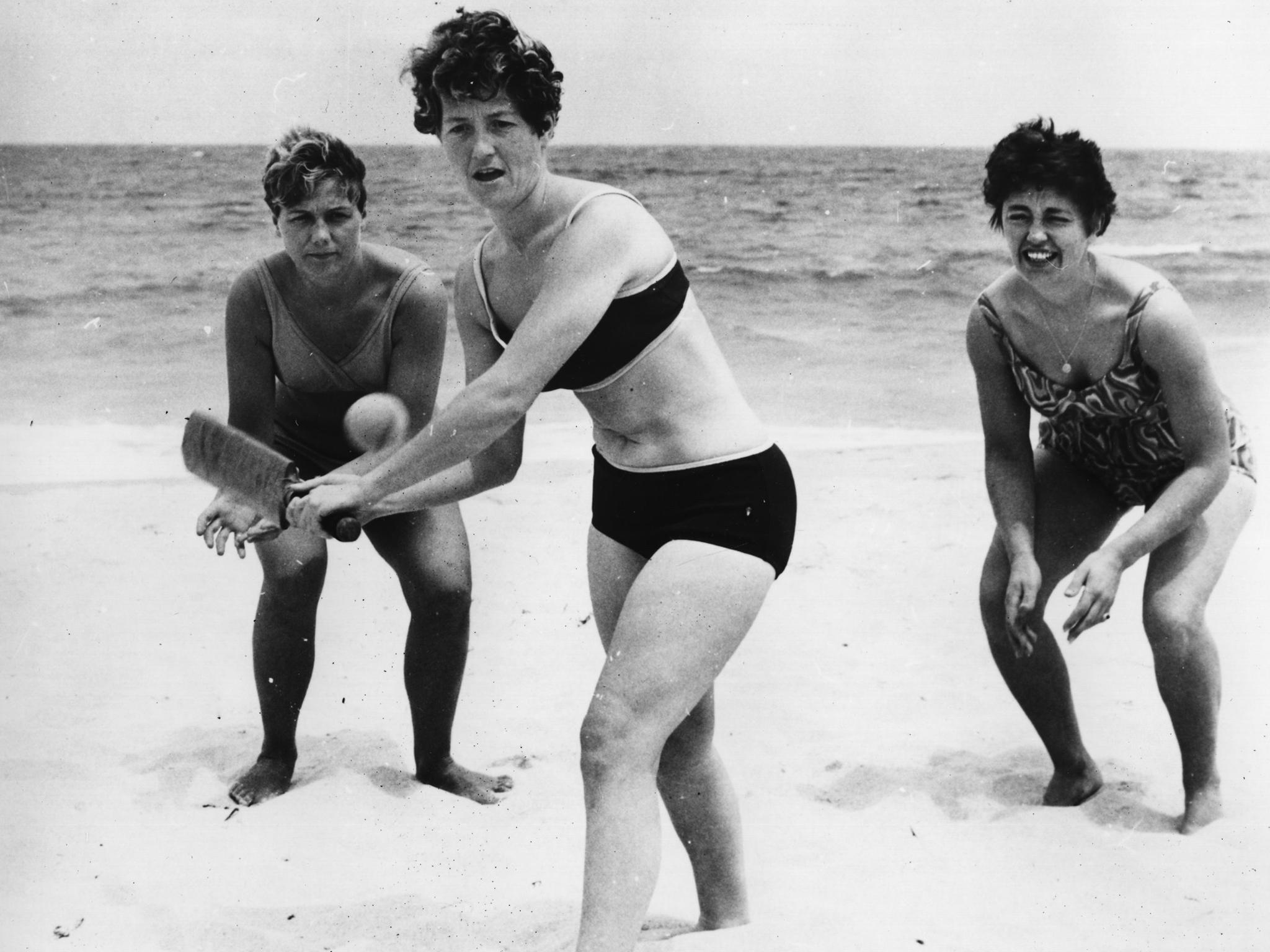Rachael Heyhoe Flint blazed a trail for women’s cricket, but change comes slowly to the ‘gentleman’s game’
English female cricketer's legacy a reminder of the need for gender equality in sport

Your support helps us to tell the story
From reproductive rights to climate change to Big Tech, The Independent is on the ground when the story is developing. Whether it's investigating the financials of Elon Musk's pro-Trump PAC or producing our latest documentary, 'The A Word', which shines a light on the American women fighting for reproductive rights, we know how important it is to parse out the facts from the messaging.
At such a critical moment in US history, we need reporters on the ground. Your donation allows us to keep sending journalists to speak to both sides of the story.
The Independent is trusted by Americans across the entire political spectrum. And unlike many other quality news outlets, we choose not to lock Americans out of our reporting and analysis with paywalls. We believe quality journalism should be available to everyone, paid for by those who can afford it.
Your support makes all the difference.The recent death of Rachael Heyhoe Flint, the trailblazing England captain who dedicated her life to the advancement of cricket for women, allows a moment to reflect on her contribution to the game and more critically on how far the game has come along the path of equality.
Her first forays into cricket took place when the more commonly held view of cricket for women was epitomised in the following quote, attributed to Sir Len Hutton: “Absurd, just like a man trying to knit”.
Despite this, my earliest memories of the game centred around crackly test match broadcasts from Australia on freezing mornings in the dead of winter, because my mother was an avid listener and would get up at 3am and insist on absolute silence at the breakfast table. Her passion for the game infected me.
Mum’s love of cricket, as it transpired, developed from her schooldays during the 1950s at Wolverhampton High School for Girls, where Heyhoe Flint was a classmate and her cricket and hockey captain. They also followed Billy Wright and their favourite football team, Wolves – so after Saturday morning hockey games they stood on the Molineux terraces together, where my mum took me to my first football game.
Not just about equality
When it comes to sex equality, two broad models of equality operate to support the advancement of sport for women. The first is a sex-blind approach, where no consideration of sex is made. Participation is based purely on the basis of interest and access, and equality of opportunity prevails. This model exists at grassroots level for young children in the UK, who play together in mixed teams.
Then there is the apartheid model, which aims for a “separate but equal” model for sport, where accommodations are made on the basis of sex. The critical issue here is whether the differences between people that affect the prospects of equality need to be addressed – not just for those who are disadvantaged, but for the benefit of all.
So while the gap between the performance potential of male and female cricket players has narrowed, biology – players’ physiques – remains a determinant of different sporting potential and there is justification for putting significant investment into women’s cricket. The bottom line always is how much and where should those resources go?
Winds of change?
Heyhoe Flint’s contribution to cricket is best seen in the context of the way sport – and cricket – changed over the past 40 years. Here the oft-used and overly absolute binary notions about judging change: “good and bad, right and wrong” are unhelpful and might be better replaced by ideas that instead emphasise progress, improvement and development.
Heyhoe-Flint’s own experiences are instructive in that regard. Her first application to become a member of the MCC, the game’s most important club, was rejected by MCC members in 1991. She was finally admitted eight years later in 1999. The core conservative arguments that women should be members of the MCC didn’t change much during that time, but the members’ views eventually did. For some, the pace of change at a moment in time will be too slow, for some too fast. It is perhaps by recognising this that Heyhoe Flint was able to persevere with good grace.

Changes and progress in the game are also reflected in the numbers. Heyhoe Flint had an England career that spanned 19 years (1960-1979), during which time she was awarded 22 test caps and played 23 one-day international matches. The recently retired England captain, Charlotte Edwards likewise had a 19-year England career between (1996-2015) and achieved 23 test caps, but – as a sign of the times – she played 171 one-day international matches and 95 T20s.
More recent changes include introducing central England contracts for women and professional T20 leagues in England and Australia and rapid advances in the women’s game. Further progress will occur with greater media coverage and more professional contracts – it’s a matter of when and to what extent. At this stage, the barriers to women in cricket are less about being a woman and more about cricket itself.
Oasis of equality
Heyhoe Flint, through those formative sporting experiences she shared with my mother in an all-girls school, found her reference point for the affirmation of equality. The social and cultural capital of sport that emerged was nurtured within its own oasis, oblivious to what boys – or the world beyond the school – thought about cricket, hockey and sport more widely. Her life subsequently became one of insisting that such possibilities should also be realised in the adult world of cricket.
However, in this adult world of cricket, inequalities go beyond sex. Interesting here are the differences between the men’s and women’s professional games. In 2015, about 75% of the centrally contracted male players were from independent schools and 25% from state school backgrounds. Curiously, for the women’s game, the figures are closer to 25% independent school and 75% state educated. This is against a backdrop where just 7% of the population are from public schools.

Similar inequalities exist in cricket with regards to race and ethnicity – and also more recently with regards to age. It is well recognised by cricket leaders that grassroots cricket is a “greying” sport, where a combination of traditional outlook and the length and format of the game mean that it is often off-putting to younger generations.
But it seems that though solutions towards greater equality for women – through the efforts of Heyhoe Flint – are hugely significant, beyond sex equality, cricket will need to do a lot more to be relevant for more diverse and dynamic generations in future.
, Senior Lecturer in Sports Ethics, Cardiff Metropolitan University. This article first appeared on The Conversation (theconversation.com)
Join our commenting forum
Join thought-provoking conversations, follow other Independent readers and see their replies
Comments